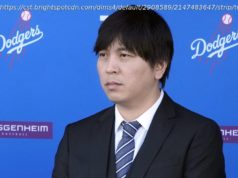The number of publicly out L.G.B.T.Q. athletes in men’s biggest pro leagues lags far behind that in women’s sports. Will Carl Nassib’s announcement change that?
Congratulatory posts flooded social media on Monday when Las Vegas Raiders defensive lineman Carl Nassib announced on Instagram that he is gay, becoming the first active N.F.L. player to do so. Jerseys and T-shirts bearing his name were the top sellers among all N.F.L. players on Monday, according to Fanatics, the league’s e-commerce partner. Stars like Giants running back Saquon Barkley — who played with Nassib at Penn State — and Arizona Cardinals defensive end J.J. Watt quickly voiced their support for Nassib on Twitter. Well-known advocacy organizations praised his declaration as monumental. “I think people are going to see what I’ve seen for years, that sports are a lot more accepting than people give it credit for,” said Cyd Zeigler, the co-founder of Outsports, a news website that covers L.G.B.T.Q. athletes and issues in sports. Yet Nassib said in his post that he had “agonized” over the decision to go public about his sexuality, after keeping it to himself for 15 years. That he is the only active player who is publicly out in one of the four major American men’s pro sports leagues suggests the height of the barrier that male athletes face openly acknowledging a gender or sexual identity that doesn’t conform with those traditionally tolerated in locker rooms. Other gay athletes who have gone public with their sexuality have said they felt pressured to suppress it — and may still despite currents in society shifting to more acceptance — for simple yet powerfully prohibitive reasons. In locker rooms, on fields and on courts, male athletes are taught to embrace heteronormative standards of masculinity. “I think it’s men and the machismo culture that pro sports are played, in particular,” that has inhibited men who identify as gay, bisexual, or queer from coming out, said Richard Lapchick, the director of the Institute for Diversity and Ethics in Sport. Still, some male athletes ventured to do so despite concerns about their safety and backlash from teammates and fans. In February 2014, the N.B.A. became the first of the four major American sports leagues to have an openly gay active player when Jason Collins, who had come out publicly the previous spring, joined the Nets. He retired from playing later that year. Michael Sam, who had been an all-American selection during his college career as a defensive end at Missouri, announced that he is gay weeks ahead of Collins’s signing, in the lead up to that year’s N.F.L. draft. The Rams selected him in the seventh, and last round, and an overjoyed Sam cried and kissed his boyfriend on national TV in one of the most visible displays of gay male sexuality in the history of sports. But the Rams cut Sam before the end of training camp. The Dallas Cowboys then signed Sam to their practice squad, but he did not play in a regular season game. He retired from football in 2015. Intermittently, a handful of other notable male professional athletes made announcements about their sexuality throughout the years only after their sports careers had ended. But in the mid-aughts the stream of male former players to publicly come out as gay quickened, seeming to herald a shift in sporting culture. Athletes like the former N.






